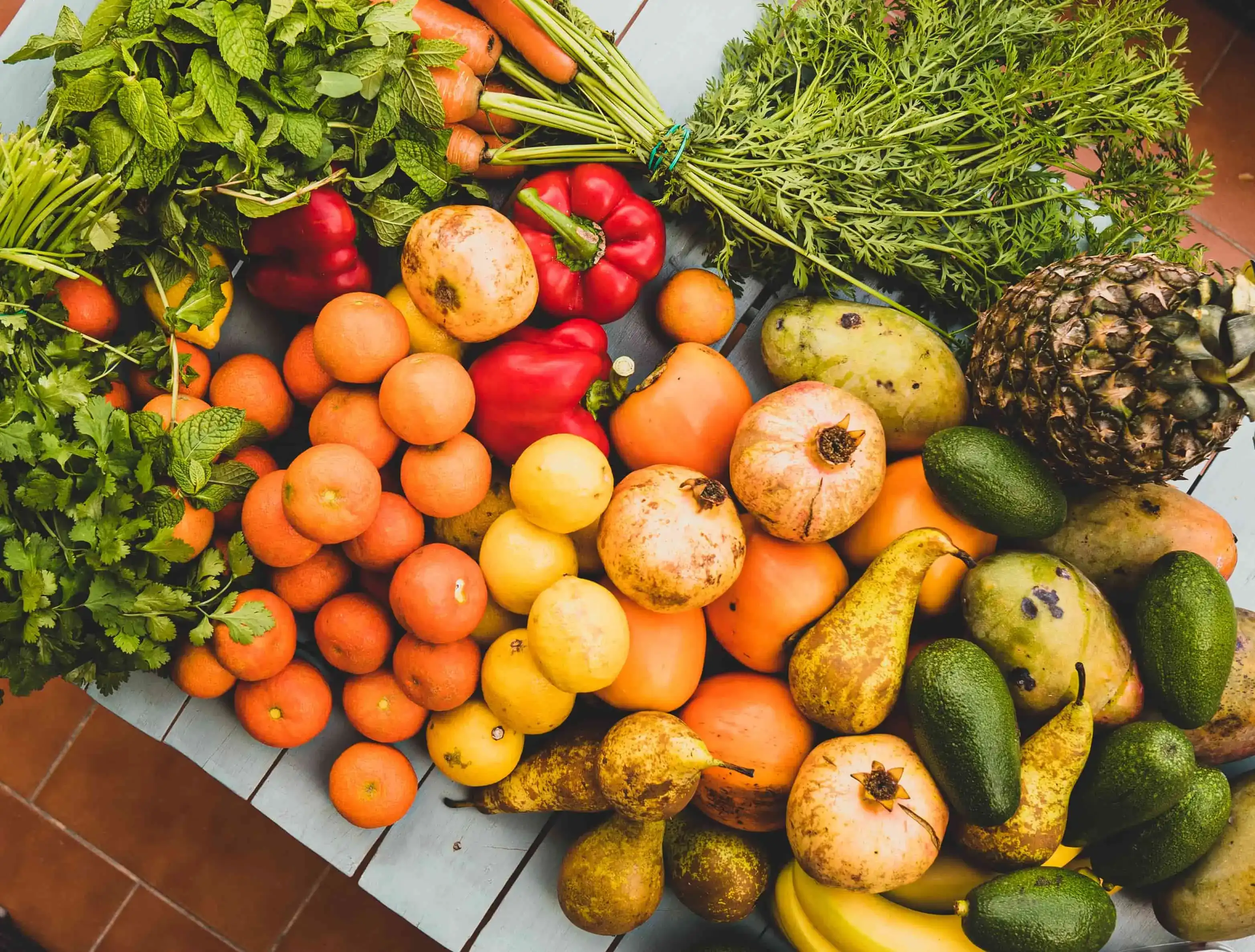Navigating the Glycemic Index: A Roadmap to Healthy Eating

In the realm of nutrition, the Glycemic Index (GI) is a powerful tool that often remains in the shadows. However, understanding and leveraging the GI can pave the way for balanced eating, sustained energy levels, and overall well-being. Join us on a journey as we unravel the mysteries of the Glycemic Index.
What is the Glycemic Index?
Demystifying the Basics:
The Glycemic Index (GI) is a fundamental concept in nutrition that goes beyond mere carbohydrate classification. It's a numerical scale that quantifies how different carbohydrates affect blood sugar levels after consumption. The scale typically ranges from 0 to 100, with higher values signifying a more rapid increase in blood sugar. This metric is particularly valuable for individuals managing conditions like diabetes or those seeking sustained energy throughout the day.
Understanding the GI involves recognizing that not all carbohydrates are created equal. While carbohydrates are a primary energy source for the body, the rate at which they are broken down and converted into glucose can vary significantly. High-GI foods result in a swift surge of blood sugar, followed by a rapid decline, potentially leading to energy crashes. In contrast, low-GI foods are digested more slowly, providing a gradual and steady release of glucose into the bloodstream, promoting sustained energy levels.
Understanding the Scale:
Low-GI (0-55):
Foods with a low GI are characterized by a slower impact on blood sugar. These options are often nutrient-dense and include whole, unprocessed foods. Incorporating more low-GI choices into your diet is associated with improved blood sugar control and sustained energy levels.
Medium-GI (56-69):
Foods in the medium-GI range have a moderate impact on blood sugar and are typically consumed in moderation. Balancing these choices with other macronutrients can help mitigate their influence on blood sugar levels.
High-GI (70 and above):
High-GI foods are rapidly digested and cause a quick spike in blood sugar. These foods, often refined and processed, may contribute to energy crashes and can be linked to various health concerns when consumed excessively.
The Glycemic Load Factor:
While the GI provides valuable insights, it's essential to consider the glycemic load (GL) as well. The GL factors in both the quality and quantity of carbohydrates in a specific food, offering a more comprehensive understanding of its impact on blood sugar. This dual consideration allows for a nuanced approach to food choices, considering not just the type but also the amount of carbohydrates consumed.
The Glycemic Index in Practical Terms:
To illustrate the practical application of the GI, let's consider an example. A bowl of instant oatmeal has a high GI, causing a rapid increase in blood sugar. However, by adding nuts or seeds to the oatmeal, the overall GI of the meal is lowered. This combination showcases how understanding the GI can empower individuals to make informed choices and optimize their diets for sustained energy.
In the next sections, we will delve deeper into practical steps for incorporating the Glycemic Index into your lifestyle, making it a valuable tool in your journey towards balanced and mindful eating.
Identifying High-GI Foods
The High-GI Offenders:
Embarking on your journey to understand the Glycemic Index begins with a keen awareness of high-GI foods. Identifying these culprits in your diet is pivotal for making informed choices and optimizing your nutritional intake.
White Bread and Bagels:
One of the primary high-GI suspects is white bread, often a staple in many households. Bagels, with their dense and refined flour composition, also fall into this category. These seemingly innocuous breakfast options can lead to a swift spike in blood sugar levels.
Tip: Swap white bread for whole-grain alternatives like whole wheat or multigrain bread to introduce healthier, low-GI options into your daily routine.
Instant Oatmeal:
While oatmeal is a popular breakfast choice, the instant variety tends to have a higher GI compared to steel-cut or old-fashioned oats. The processing that makes instant oatmeal convenient can also result in a quicker impact on blood sugar.
Tip: Opt for steel-cut or old-fashioned oats, and personalize your bowl with nuts, seeds, or fresh fruits to enhance both flavor and nutritional value.
Processed Cereals:
Many processed cereals, especially those marketed to children, often contain added sugars and refined grains, elevating their GI. Starting the day with these sugary cereals can lead to an energy spike and subsequent crash.
Tip: Choose whole-grain, low-sugar cereals, and consider adding fresh fruits or nuts for a more balanced and nutritious breakfast.
Pretzels and Rice Cakes:
Snacking on pretzels or rice cakes might seem like a healthier alternative, but these snacks can be deceivingly high on the Glycemic Index. The rapid digestion of the starches in these snacks can result in a quick surge in blood sugar levels.
Tip: Opt for snacks with a lower GI, such as whole-grain crackers or vegetable sticks paired with hummus, to satisfy your cravings without compromising on nutrition.
Sugary Snacks and Candies:
Indulging in sugary snacks and candies is an obvious high-GI choice. These treats, rich in refined sugars, can lead to a rapid increase in blood sugar, providing a burst of energy that is short-lived.
Tip: Satisfy your sweet tooth with naturally sweet options like fresh fruits or dark chocolate, which have a comparatively lower impact on blood sugar.
The Importance of Food Labels:
Understanding the GI of foods is further aided by scrutinizing food labels. While the GI is a valuable guideline, it's essential to consider the overall nutritional profile of a product. Pay attention to factors like fiber content, as fiber can mitigate the impact of carbohydrates on blood sugar.
Understanding the Impact of Cooking Methods
Cooking as a Catalyst:
Delving into the Glycemic Index journey involves not just what you eat but how you prepare your meals. The cooking methods you choose can significantly influence the GI of your dishes, impacting the rate at which carbohydrates are digested and absorbed. Let's embark on a culinary exploration to uncover the nuances of cooking methods and their impact on the Glycemic Index.
Steaming for Retained Nutrients:
Steaming emerges as a hero in the world of low-GI cooking methods. This gentle approach helps retain the maximum nutritional value of your food, ensuring that essential vitamins and minerals are preserved. From vegetables to grains, steaming proves to be a versatile and health-conscious choice.
Tip: Incorporate steamed vegetables as side dishes or main components of your meals to elevate nutritional content and maintain a lower GI.
Slow Cooking for Starch Breakdown:
The art of slow cooking not only imparts rich flavors to your dishes but also contributes to a lower impact on blood sugar. This method allows starches, especially in grains and legumes, to break down more gradually, resulting in a slower release of glucose into the bloodstream.
Tip: Explore hearty slow-cooked recipes, incorporating whole grains, lean proteins, and an array of colorful vegetables for a wholesome and low-GI feast.
Pairing with Healthy Fats:
Strategic pairing of carbohydrates with healthy fats can be a game-changer in managing the Glycemic Index of your meals. Fats slow down the digestion process, preventing a rapid surge in blood sugar. Avocado, olive oil, nuts, and seeds are excellent companions for this purpose.
Tip: Drizzle salads with olive oil, add nuts to your morning oats, or enjoy avocado with whole-grain toast to create balanced and satisfying meals.
Grilling for Flavorful Low-GI Delights:
Grilling is not just about creating tantalizing flavors; it can also contribute to maintaining a lower Glycemic Index. Grilling allows excess fats to drip away, resulting in a leaner dish. Meats and vegetables prepared on the grill can offer a delightful combination of taste and health benefits.
Tip: Experiment with grilled vegetables, lean proteins, and even fruits for a diverse range of low-GI options.
Baking with Whole Ingredients:
When it comes to baking, the choice of ingredients plays a pivotal role in determining the Glycemic Index of the final product. Opting for whole and unprocessed ingredients like whole-grain flour, oats, and natural sweeteners can yield baked goods with a lower impact on blood sugar.
Tip: Explore baking recipes that incorporate whole grains, nuts, and fruits for added fiber and a reduced Glycemic Index.
Boiling for Nutrient Retention:
Boiling might seem like a straightforward method, but its simplicity can be harnessed for preserving the nutritional integrity of foods. Whether it's whole grains, legumes, or vegetables, boiling helps maintain a lower Glycemic Index by preventing excessive nutrient loss during the cooking process.
Tip: Prepare soups and stews with a variety of colorful vegetables, legumes, and whole grains for a nourishing and low-GI meal.
Conclusion:
Navigating the Glycemic Index is a journey towards mindful and balanced eating. By understanding the impact of different foods on blood sugar levels, you empower yourself to make informed choices that contribute to sustained energy, overall health, and well-being. Begin your adventure today, and let the Glycemic Index be your guide to a healthier and more energized lifestyle. Here's to embracing the power of balanced nutrition!


